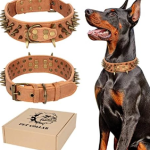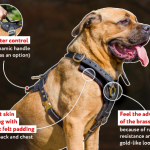Dog Toy
When it comes to ensuring the well-being and happiness of our canine companions, dog toys play an indispensable role. Not only do they provide entertainment, but they also serve vital functions in mental stimulation, physical exercise, and behavioral training. This guide aims to delve into the diverse world of dog toys, exploring their benefits, types, and the factors to consider when choosing the perfect toy for your furry friend.
The Importance of Dog Toys
Dog toys are not just for fun. They are essential for your dog’s physical and emotional health. Here’s why:
- Mental Stimulation: Toys can keep your dog’s mind sharp and engaged. Puzzle toys that require problem-solving can help keep boredom at bay and prevent destructive behaviors that arise from a lack of stimulation.
- Physical Exercise: Toys that encourage movement, such as fetch balls or tug ropes, help your dog stay fit and healthy. Regular exercise is crucial for maintaining a healthy weight and preventing obesity-related health issues.
- Behavioral Training: Interactive toys can be used to reinforce positive behaviors and teach new commands. For example, reward-based toys can be part of a training regimen to encourage good behavior.
- Stress Relief: Chew toys and plush toys can provide comfort and reduce anxiety, especially for puppies and dogs that suffer from separation anxiety.
- Dental Health: Many toys are designed to help clean your dog’s teeth and massage their gums, contributing to overall dental health.
Types of Dog Toys
Dog toys come in a variety of types, each serving different purposes. Understanding these types can help you select the best toys for your dog’s needs.
- Chew Toys: Chew toys are ideal for dogs that love to gnaw on things. They help keep your dog’s teeth clean and are great for teething puppies. Options include rubber toys, rope toys, and nylon bones.
- Fetch Toys: Toys designed for fetching, such as balls and frisbees, are perfect for active dogs. They help improve your dog’s agility and provide excellent exercise.
- Puzzle Toys: These toys challenge your dog’s problem-solving skills. They often involve hiding treats inside the toy that your dog must work to get out, offering both mental and physical stimulation.
- Plush Toys: Plush toys are soft and cuddly, often resembling animals or other creatures. They are excellent for comfort and can become your dog’s favorite companion.
- Tug Toys: Designed for interactive play between you and your dog, tug toys are sturdy and can withstand vigorous tugging. They help strengthen the bond between you and your pet.
- Squeaky Toys: These toys contain a squeaker that emits a sound when bitten or chewed. They can excite your dog and encourage play, although some dogs may become overly fixated on the squeaker.
- Treat-Dispensing Toys: These toys release treats as your dog plays with them. They combine fun with the reward of a tasty treat, making them ideal for keeping your dog entertained.
Factors to Consider When Choosing Dog Toys
Selecting the right dog toy involves more than just picking the most colorful or popular option. Here are some factors to consider:
- Size and Durability: Choose toys that are appropriate for your dog’s size and chewing strength. A toy that is too small can be a choking hazard, while one that is too large might be difficult for your dog to handle. Additionally, ensure the toy is durable enough to withstand your dog’s chewing habits.
- Safety: Ensure the toy is made from non-toxic materials and does not have small parts that could break off and pose a choking hazard. Regularly inspect the toy for signs of wear and tear.
- Ease of Cleaning: Opt for toys that are easy to clean, especially if they are used for food or treat dispensing. Toys that can be washed in the dishwasher or easily scrubbed will help maintain hygiene.
- Your Dog’s Preferences: Pay attention to your dog’s play style and preferences. Some dogs love to chew, while others prefer to chase or fetch. Select toys that align with your dog’s natural instincts and play habits.
- Age and Health: Consider your dog’s age and health when choosing toys. Puppies may need softer, safer toys for teething, while older dogs may benefit from toys that help with dental health or joint mobility.
Top Dog Toys on the Market
To give you a better idea of what’s available, here are some highly recommended dog toys:
- KONG Classic Dog Toy: Known for its durability and versatility, the KONG Classic is perfect for chewing, fetching, and stuffing with treats. Its hollow center can be filled with food or treats to keep your dog engaged.
- Nylabone DuraChew: Ideal for aggressive chewers, the Nylabone DuraChew is designed to withstand intense chewing and help clean your dog’s teeth.
- Chuckit! Ultra Ball: For fetch enthusiasts, the Chuckit! Ultra Ball offers durability and bounce, making it a favorite for outdoor play.
- Outward Hound Hide N Seek Puzzle Toy: This interactive toy challenges your dog to find and retrieve hidden squeaky toys, offering mental stimulation and fun.
- Benebone Real Flavor Dental Chew: Flavored with real ingredients, the Benebone provides both a tasty chew and dental benefits.
FAQs About Dog Toys
Q1: How often should I replace my dog’s toys?
A1: It depends on the toy and your dog’s usage. Inspect toys regularly for wear and tear, and replace them when they become damaged or pose a safety risk. Chew toys may need replacing more frequently if your dog is an aggressive chewer.
Q2: Are there any toys that are bad for dogs?
A2: Yes, toys that are too small, have small parts, or are made from toxic materials can be harmful. Avoid toys with loose pieces that could be swallowed, and ensure all toys are made from safe, non-toxic materials.
Q3: Can dog toys help with separation anxiety?
A3: Yes, toys can provide comfort and distraction for dogs with separation anxiety. Interactive and treat-dispensing toys can keep your dog occupied and help ease anxiety when you’re away.
Q4: How can I encourage my dog to play with new toys?
A4: Introduce new toys gradually and use treats or praise to encourage your dog to engage with them. Play with the toy yourself to show your dog how it’s used, and be patient as your dog explores the new addition.
Q5: What should I do if my dog loses interest in a toy?
A5: If your dog loses interest, try rotating toys to keep things fresh. You can also try interactive toys or toys with different textures and sounds to re-engage your dog’s interest.
Conclusion
Dog toys are an essential part of your pet’s life, offering numerous benefits beyond mere entertainment. By understanding the types of toys available, considering your dog’s specific needs, and selecting high-quality, safe options, you can enhance your dog’s physical health, mental stimulation, and overall happiness. Whether it’s a chew toy for teething puppies, a durable fetch ball for active dogs, or a puzzle toy for mental challenges, the right toy can make a significant difference in your furry friend’s life.
Investing in the right dog toys not only enriches your dog’s playtime but also strengthens your bond with them. By choosing wisely and staying attuned to your dog’s preferences and needs, you can ensure that their playtime is both enjoyable and beneficial.






